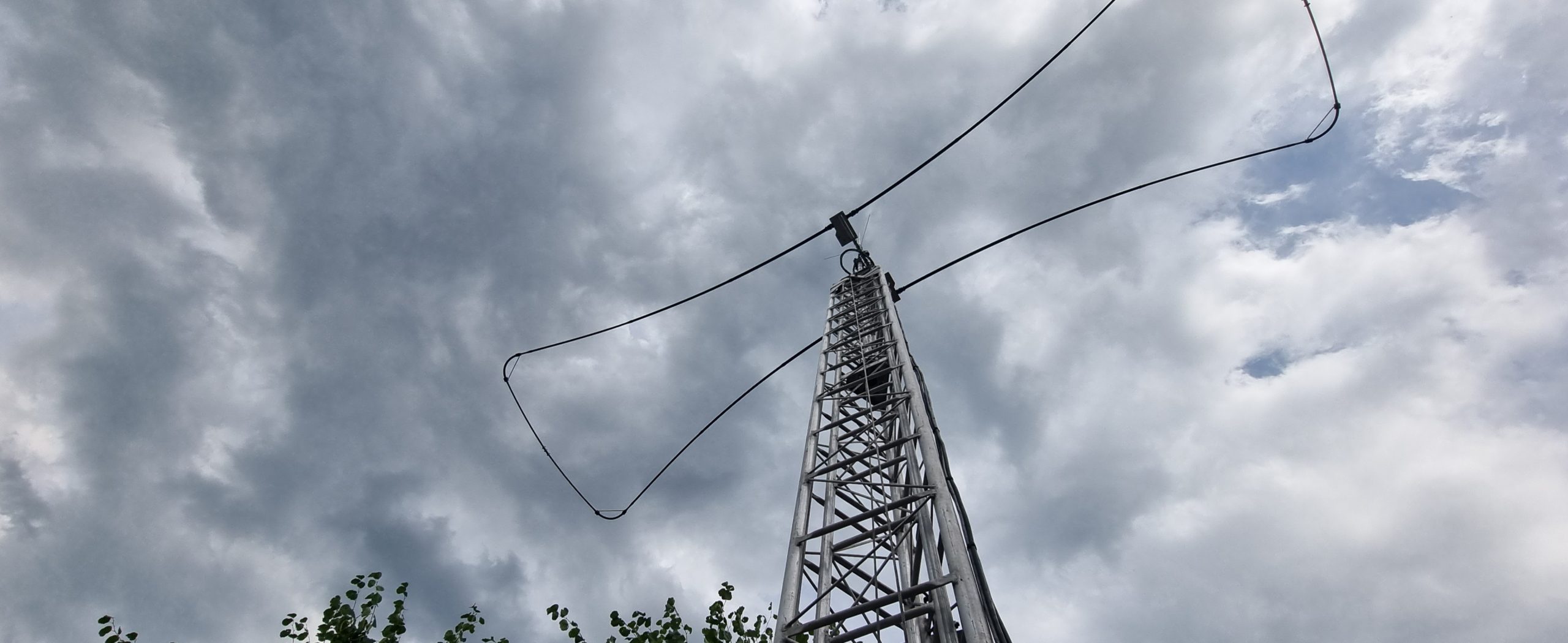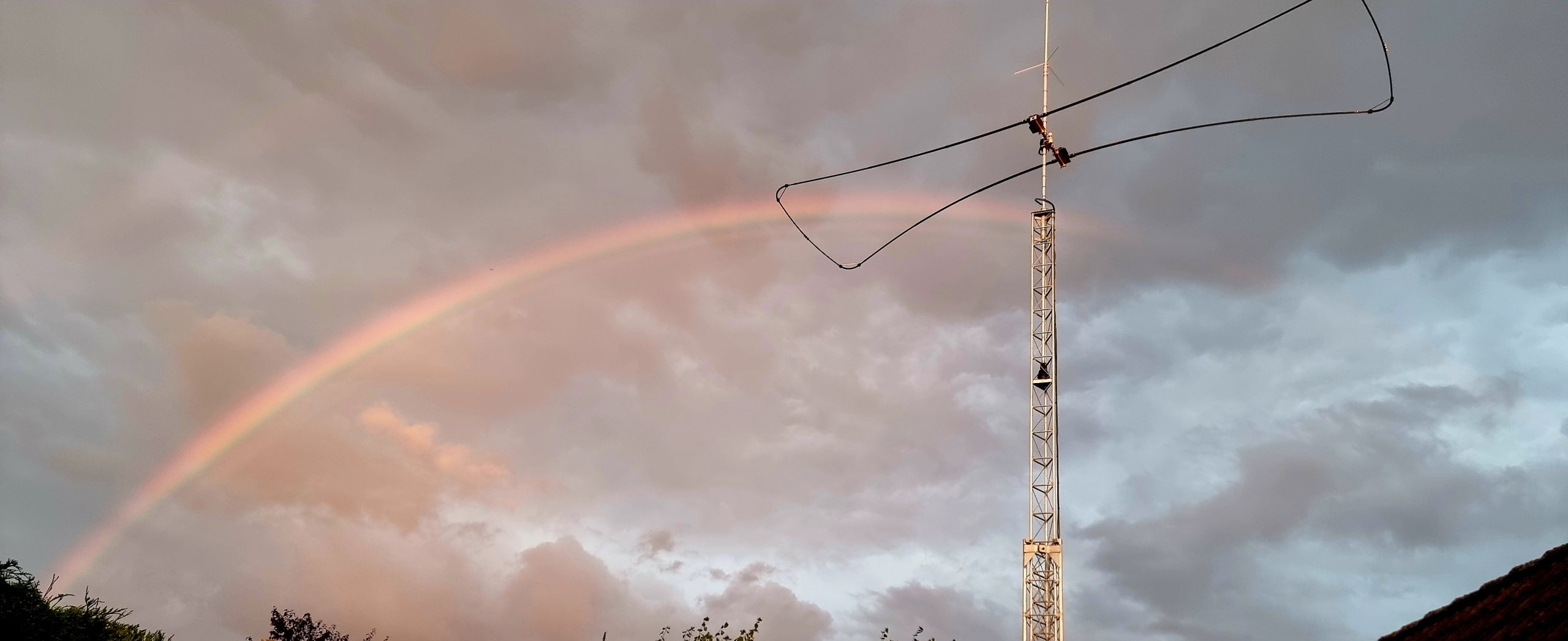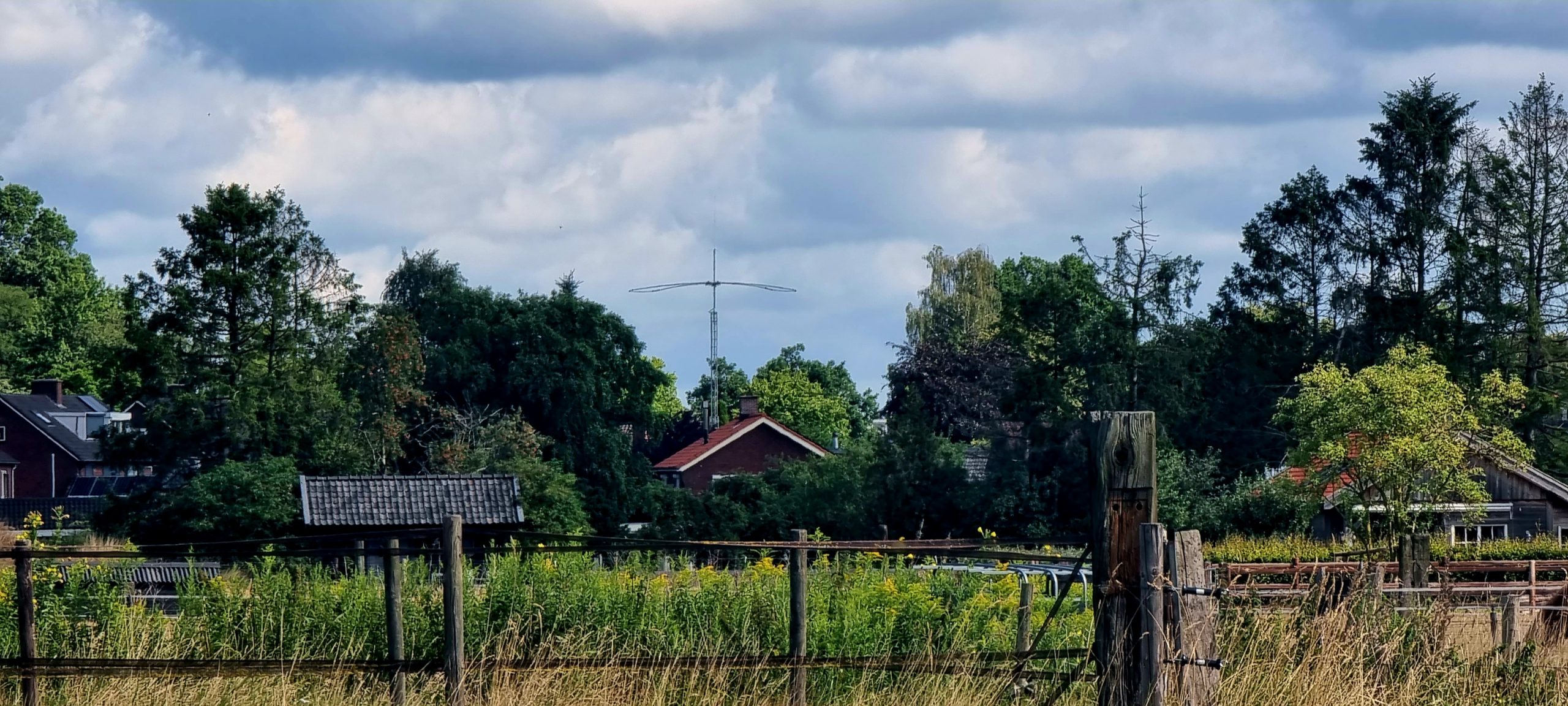
| The SteppIR Urban Beam antenna..Full size yagi on 40m-6m Yagi: After a long time playing with Optibeams we did sell our property and we’re moved to our new property next to some national park. Unfortunately there we’re big strong rules in this area for putting up big antennas. Well…after i did sell the OB’s to a good friend i did do some research on the internet and i saw the newcomer from SteppIR…The Urban Beam from steppir antennas Almost 10m elements length, good specs and a beautifull nice dark green color whats fitting right in this area ;). After 2 days of assembling the beam was ready to go up in my telescopic 26m tower…..looking awesome!!!! What i did noticed….very good F/B and from 6m to 40m a nice and steady SWR…less then 1:1.15. Also the noise levels are incredible, for example on 20m i only got a max of S1. With bad weather like some rainy day the SteppIR also works great, no strange SWR or noise from the water. The 180degrees switch is working perfect….this option i do like very much. Playing with the SDA100 controller is very easy too, you can even get the controller tuned by the radio itself. Many guys asking me already what antenna i use….reports are really incredible. 73s Sascha de PF9Z |



SteppIR antenna, and now i can tell you, it’s one of the best antennas on our globe!
My first contact was surprisingly recorded in Marocco by CN8GC..thx
SteppIR…thanks for making signals more clear in the noiselevel 😉

The Details:
The SteppIR UrbanBeam Yagi is a fantastic choice for those that are limited by lot size, regulations (HOA’s) or even the critical eye of neighbors and spouses. The UrbanBeam has a unique appearance -some customers have remarked it looks like a bow-tie, or a butterfly! Regardless of its shape, the UrbanBeam delivers outstanding performance for an antenna that weighs only 45 lb (20.5 kg) and has a wind load of a mere 4.4 sq ft (.41 sq m). The overall physical length of the Yagi is 30.5 ft (9.3 m), which allows for a turning radius of just 15 feet (4.72 m).
On 20m-6m (13.3-54 mHz), the UrbanBeam functions as a two element Yagi. It has a very short boom width of 48” (1.22m). There is a reason for this – the UrbanBeam draws on the Laws of Physics – when placing a parasitic element very close to a driven element, approximately .1 wavelength or less, the Yagi will achieve gain performance that is quite high for a 2 element Yagi and is more like the performance you would expect from a 3 element Yagi. There is a caveat to this, the bandwidth is greatly limited, by approximately 120 kHz. This would be a highly impractical design for a traditional fixed length aluminum Yagi, which are single-frequency devices – the bandwidth of a fixed length Yagi is very narrow unless methods such as traps or interlacing are introduced to “trick” the radio into thinking it is resonant. To put that into a simple visualization, each time you would tune the radio when using a fixed length Yagi, to achieve the same performance as the UrbanBeam (or any SteppIR antenna), a portion of each element would have to be physically removed or added – and at nearly every frequency!
SteppIR antennas adjust to the exact length required for any given frequency within their range. In other words, the signal is NOT degrading – the characteristics of the antenna change as you adjust through the bands due to spacing of the elements. When the UrbanBeam Yagi is on 20m, there are two nicely spaced elements and there is gain of 6.5 dBi free space, and front-to-rear ratio of 12dB. As the antenna is tuned towards 10m, the characteristics of the Yagi change – but in the case of the UrbanBeam, not by much. Gain and front-to-rear improve slightly – on 10m, gain is 6.65 dBi and front-to-rear is 14.8 dB. To the experienced antenna enthusiast, this should make no sense – if element spacing gets wider, normally the gain would go up and the front-to-rear would go down – why does this not happen with the UrbanBeam?
For the Urban Beam, the spacing at the boom is 48” (1.22 m), and at the ends of the antenna the spacing is close to 9 feet (2.74 m). As the UrbanBeam is tuned from 20m-6m, because of the tapering width of the elements relative to the boom, the element spacing is gradually changing as well – which allows for very uniform performance in both gain and front-to-rear.
At SteppIR we measure our gain figures in dBi free space, it is the most realistic and objective performance evaluation for an antenna. Many of our competitors use dBd over ground for their specifications, which is fine except that the height over ground can be manipulated to make the gain figures look better than they really are. For the same reason, we use Front-to-Rear measurements for our Yagi instead of front-to-back, because when measuring front-to-back, the “back” ratio of the antenna model can be theoretically anywhere behind the front, meaning the very best performance scenario can be taken even if it is not practical in actual performance. With front-to-rear, we are choosing the exact scenario every time – directly 180 degrees behind the front lobe of the antenna. The UrbanBeam Yagi is powered using stepper motors, located in an element housing unit (EHU), which in-turn is connected to an electronic controller via control cable. The controller is the brains of the operation, the antenna models reside in the controller firmware and it in commands each EHU to adjust to the exact length on any given frequency.
There are two controller types, the standard SDA 100 electronic controller which is included in the purchase price, or the optional SDA 2000 OptimizIR. Each will be explained in more detail later but the common features are:
180 Degree Mode: The 180 mode allows users to electrically “rotate” the antenna 180 degrees opposite the forward direction beam heading. This is accomplished with the simple press of a button, and in seconds, the transformation is complete – the Yagi is pointing in the exact opposite direction.
Bi-Directional Mode: The Bi-Directional mode function operates in a similar manner to the 180 degree mode, except when enabled, the antenna operates as a hybrid Yagi, with forward gain occurring in opposite directions, simultaneously.
Element Retract: With the Element Retract Mode, the user can retract all the elements on a SteppIR antenna to the home position, and the controller will then power down automatically. Retracting elements is an extremely valuable option in the event of inclement weather such as high winds, snow or radial icing. During lightning events, a retracted antenna greatly reduces the conductive area of the antenna platform.
Calibrate: All SteppIR antennas utilize a few watts of power to “lock” the stepper motors in-place, even when the power is turned off on the controller. This helps to keep the antenna in calibration, but it is not a critical requirement – most of the time the antenna will stay in tune regardless of power being applied. On occasion, there may be a need to calibrate the antenna. This is easily accomplished with the touch of a button – the antenna will make a growling sound as each EHU is retracted, and once completed the antenna will return to the last band/frequency it was at before the calibration commenced.
| SPECIFICATIONS | URBANBEAM |
|---|---|
| Weight | 45 lb / 20.5 kg g |
| Wind Load – EIA-222-F/G* | 7.9 sq ft / .73 sq m |
| Wind load – EIA-222-C* | 4.4 sq ft / .41 sq m |
| Turning Radius | 15.5 ft / 4.72 m |
| Boom Length | 4.0 ft / 1.22 m |
| Longest Element | 30.5 ft / 9.3 m |
| Boom Outside Diameter | 1.75 in / 4.45 cm |
| Power Rating | 3 KW |
| Frequency Coverage | **6.8 mHz—54 mHz |
| Cable Requirements | 12 conductor 22 ga shielded |
| Specifications | UrbanBeam |
| BAND | \ DBI GAIN / | F/R DB |
|---|---|---|
| 40 m | 1.6* | 9.55(F/S) |
| 30 m | 1.77** | 9.63(F/S) |
| 20 m | 6.5 | 12 |
| 17 m | 6.6 | 12.6 |
| 15 m | 6.6 | 14 |
| 12 m | 6.7 | 15.7 |
| 10 m | 6.65 | 14.8 |
| 6 m* | 6.15 | 4 |
| Band | dBiGain | F/R dB |
